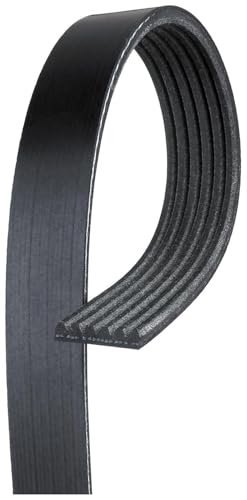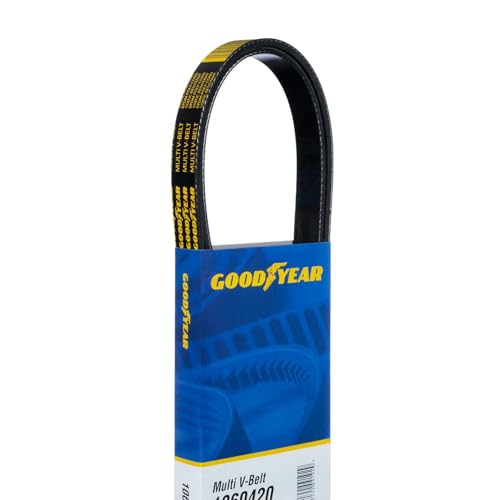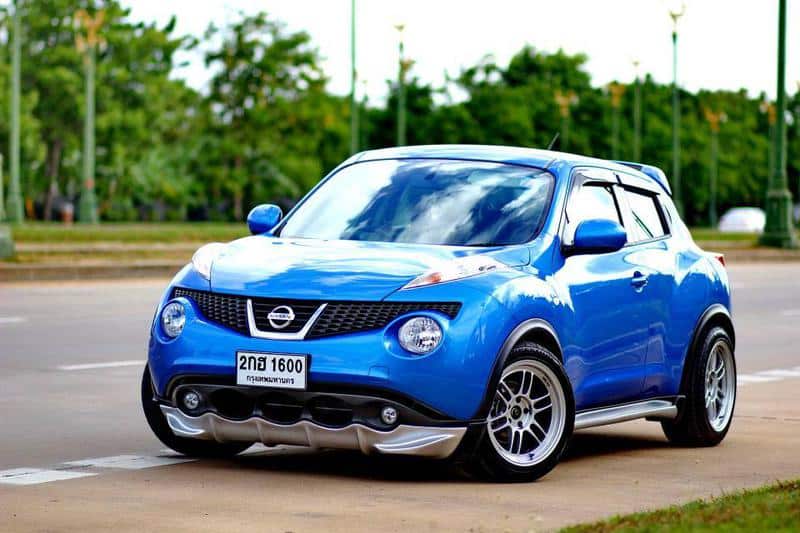A serpentine belt is one of the key elements providing your motor’s steady functioning. And we are going to provide you with all the necessary information about its examination plus substitution. A serpentine, also called an s-belt deals with simplifying pumps plus sheaves operation under the hood.
This long belt deals with any motor-driven detail, comprising a water pump, alternator, a/c compressor, and power steering pump.
As so many motor’s internal parts heavily depend on it, it’s crucial to examine your s-belt periodically for possible weariness, cracking, or glazing. A serpentine belt must be substituted after every 30,000-60,000 miles run. In order to make this process easier for you, we are offering a detailed guide on the inspection and substitution of this belt.
Serpentine belt change guide
Tools needed:
- Socket set plus ratchet
- Serpentine belt
- Protective eyewear
- Gloves
- Flashlight
General Rules of S-Belt Replacement
Experienced drivers who used to substitute fan belts may recall how traumatic and energy-consuming the process it was. Moreover, as a rule, it was necessary to substitute two or even three belts.
Today, contemporary automobiles employ one wider, multi-rifled serpentine belt in lieu of the ones for each internal detail. A curious fact: the belt got its name for the manner it snakes around various sheaves.
Serp belt substitution is pretty easy due to contemporary automatical drive belt tensioners eliminating the necessity of loosening bolts or prying elements into disposition for re-tensioning. Revise the tensioner, remove the old belt and mount a fresh one. The tensioner can be released after belt ribs take their positions into the sheave grooves.
Step-by-Step Instructions
Step 1: To reach the motor’s front part, move away from motor covers, shrouds, or plastic guards, which may prevent you from seeing the work area well. Having opened the automobile’s hood, you will get access to the serp belt.
Step 2: Deactivate the battery. Actually, the battery must always be deactivated before any serious operations within an automobile. Applying a wrench or socket of the proper size weakens the nut carrying a black grounding cable on the negative battery terminal.
- Slip the cable off from the terminal and thrust it to the batteries’ side.
- The positive terminal may stay connected.
Step 3: Localize the belt tensioner situated under spring tension to keep the pressure on the belt that protects it. A contingent from your automobile’s motor, the s-belt may be situated in the front part of a motor or may go along its side. If there are any motor covers on a way, move them away.
Step 4: Localize the serpentine belt routing diagram. Many automobiles are supplied with a sticker in the motor bay demonstrating how the s-belt is expected to pass through different motor sheaves. If your automobile has no sticker, you will have to memorize the belt’s routes.
- Consult the owner’s manual for your automobile model to create a diagram.
- Another way is to take a photo of how the existing belt is placed and follow the scheme while installing a fresh one.
Step 5. Loosen the tensioner employing a wrench. Just push it on the opposite side of the spring tension. A contingent from employment, your s-belt may have a tensioner established on it by a mobile bracket or an auto tensioner sheave, using an internal spring for employment of persistent pressure to the belt.
- If your automobile features no tensioner sheave, tension is set on the belt by an alternator bracket.
- If you have any doubts, consult your automobile’s service manual to find out what tensioner it keeps.
Auto tensioners feature a port for a ½ inch drive ratchet or a bolt for which you are free to utilize a socket. Inset a wrench or set a socket over the bolt on the tensioner. Twirl it away from the belt to loosen the tension.
Step 6: Pull the belt off the nearest sheave after the tensioner is weakened. If your automobile is equipped with an alternator bracket, loosen two bolts passing through long bracket slots. After that, the belt’s pressure will most probably shift the alternator to motor, relieving the pressure.
Step 7: Now, feel free to take off the belt. Remove it from the bottom sheave plus all idler sheaves plus accessories.
Step 8: Make sure that a fresh belt looks similar to the old one. They must have the same width as well as an identical number of ribs, covering the belt horizontally. Note that the old belt may be a bit longer as it stretches a bit after being utilized for a long time.
- If the belts have different width, don’t install the new one as it’s wrong.
- Make certain that a fresh belt has no damages or flaws. Otherwise, it may tear soon after its installation.
Step 9: Having examined the fresh belt, mount it onto the sheaves.
- The s-belt must be long enough to cover all the sheaves, excluding the tensioner until you revive its pressure.
- In case the belt lies too loosely, it signifies that you have the wrong size belt. The other reason for that is that you have placed it incorrectly.
Step 10: After placing the belt on the motor sheaves, activate the tensioner for the belt mounting finalization.
Step 11: Having revived pressure on the auto tensioner, place the belt over it. Employ the same wrench to weaken the auto-tensioner sheave, then drag the belt over it. As soon as the belt is set, release the tensioner’s pressure to hold the belt in its place. If your automobile features no auto tensioner, input a pry bar or a piece of wood betwixt the alternator and the motor.
Place the belt over the alternator sheave. Employing a bar, extract the alternator from motor and then, release pressure on the belt. Clench bolts one more time after applying tension.
Step 12: Having finished the belt installation, take a flashlight to check if the belt placement on the sheaves aligns with the belts’ riffles.
Serpentine Belt Replacement Tips
- Belt sheave grooves are cleaned better by wire brushes.
- Always employ the belt of the correct size for maintenance of the normal tension level.
- Avoid applying “belt dressing” or anti-noise sprays. Though they can be a temporary solution of the problem, they may cause belt failure due to the contaminated sheave system.
- When you remove the belt, twirl the sheaves to make certain that the bearings are reliable. If bearings fail, they shriek before locking up and throwing the belt off.
A serpentine belt ensures the steady functioning of air conditioner compressor, power steering pump plus the alternator. It may fail or crack after being utilized for some time, and that leads to some systems failure. Steering will become complicated due to the car battery’s diminished charge caused by non-operational power assist. Though belt placing is quite a complicated task, you will easily cope with it by drawing a diagram or making a photo.
Best serpentine belts for the money
- Proprietary “Run Quiet” technology for better grip, less slip resulting in a quieter operation
- Strong tensile cords carry high horsepower loads without stretching
- Ground rubber ribs are compounded from high strength synthetic rubber for wear resistance and long life
- Fit: Model Model year MDX. 2003 - 2013 RL 2005 - 2012 TL 2004 - 2008 ZDX. 2010 - 2013
- Allows for the operation of various pulleys, and drive belt accessories, with the use of a single belt
- Creates a secure point of contact with the pulley, which allows for traction
- Some ACDelco GM Original Equipment parts may have formerly appeared as GM Genuine Parts (OE) or ACDelco Professional
- GM Engineers design and validate OE parts specifically for your Chevrolet, Buick, GMC, or Cadillac vehicle
- 【Compatible with】Engine Drive Belt Tensioner Idler Pulley Kit fits for 2005 2006 2007 2008 2009 2010 Ford Mustang 4.0L GAS
- 【Higher Quality】Made of premium materials with excellent resistance to heat, corrosion, and deformation. The precision-built pulley and tensioner provide stable performance and reliable operation under various driving conditions
- 【Improve Transmission Efficiency】Stable belt tension reduces energy loss and ensures smoother power transmission. With precise tension control, it prevents belt slippage, vibration, and squealing noise, while maintaining ideal contact and friction between the belt and pulleys for improved overall performance
- 【Reliable Drive Performance】Engineered with upgraded durable, wear-resistant functional components to minimize early belt wear, tension loss, and pulley issues. Designed for consistent, reliable drive performance under heat, load, and long-distance use—helping reduce maintenance over time
- Drives several engine functions
- Some ACDelco Gold parts may have formerly appeared as ACDelco Professional
- Premium aftermarket replacement part
- Manufactured to meet specifications for fit, form, and function for General Motors vehicles as well as most makes and models
- Meets or Exceeds OEM Specifications; Long-life EPDM Rubber Compound
- Proprietary rubber formulation for quiet operation
- Synthetic tension members with balanced twist cord ensures neutral tracking when running
- AutoCare Association recommends inspecting belts at 60,000 miles and replacing at 90,000 miles
- Allows for the operation of various pulleys, and drive belt accessories, with the use of a single belt
- Creates a secure point of contact with the pulley, which allows for traction
- Some ACDelco GM Original Equipment parts may have formerly appeared as GM Genuine Parts (OE) or ACDelco Professional
- GM Engineers design and validate OE parts specifically for your Chevrolet, Buick, GMC, or Cadillac vehicle
- Compatible Vehicles: Fit For Toyota Camry 2.5L L4 2010, Fit For Toyota Camry 2.5L L4 2011
- Replacement Part Number: Drive Belt Tensioner Assembly replace 39096, 1662036030, 49438, 166200V010
- Kit's Specification: Drive Belt Tensioner Kit is includes Belt Tensioner x 1, Serpentine Belt x 1
- Carefree Buying: Loautong provides a one-year unlimited mileage guarantee for our carefully manufactured. We focus on Drive Belt Tensioner Assembly parts to ensure worry-free driving
- Meets or Exceeds OEM Specifications; Long-life EPDM Rubber Compound
- Proprietary rubber formulation for quiet operation
- Synthetic tension members with balanced twist cord ensures neutral tracking when running
- AutoCare Association recommends inspecting belts at 60,000 miles and replacing at 90,000 miles
- Proprietary “Run Quiet” technology for better grip, less slip resulting in a quieter operation.
- Strong tensile cords carry high horsepower loads without stretching
- Ground rubber ribs are compounded from high strength synthetic rubber for wear resistance and long life.
- Fit type: Vehicle Specific
- Fits: 2011-2014 Dodge Attitude, 1987-1991 Ford Country Squire, 1988-1991 Ford E-250 Econoline Club Wagon, 1988-1996 Ford E-350 Econoline, 1988-1996 Ford E-350 Econoline Club Wagon, 1996 Ford Econoline Super Duty, 1988-1996 Ford F-250, 1997 Ford
- - Goodyear Multi V Serpentine Belt offers durability & performance with EPDM rubber & balanced twist polyester cord for reliable power transmission
- - Suitable for alternators, water pumps, air conditioning compressors, & power steering systems, providing enhanced durability in automotive applications
- - EPDM Rubber Compound & Balanced Twist Polyester Cord ensure resistance to heat, weathering & stretching for long-lasting performance
Last update on 2026-01-08 / Affiliate links / Images from Amazon Product Advertising API




















